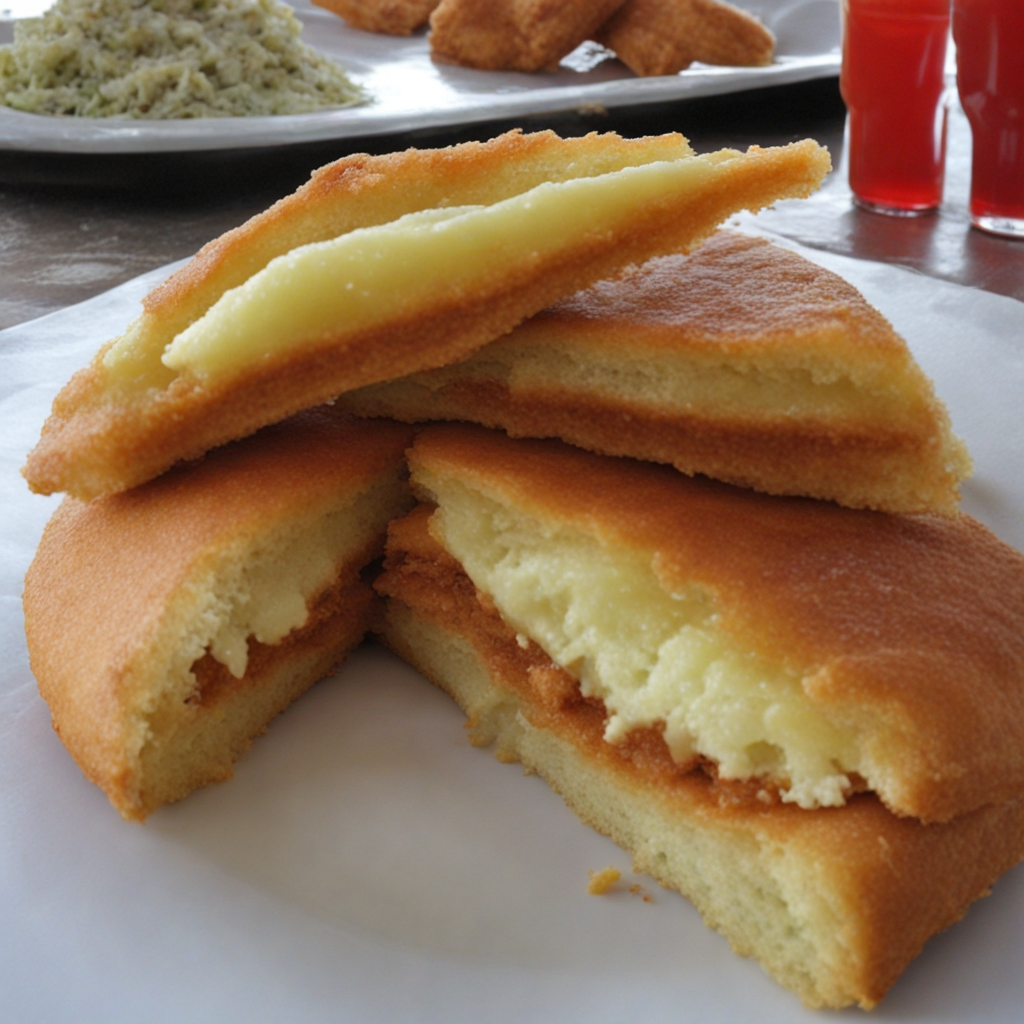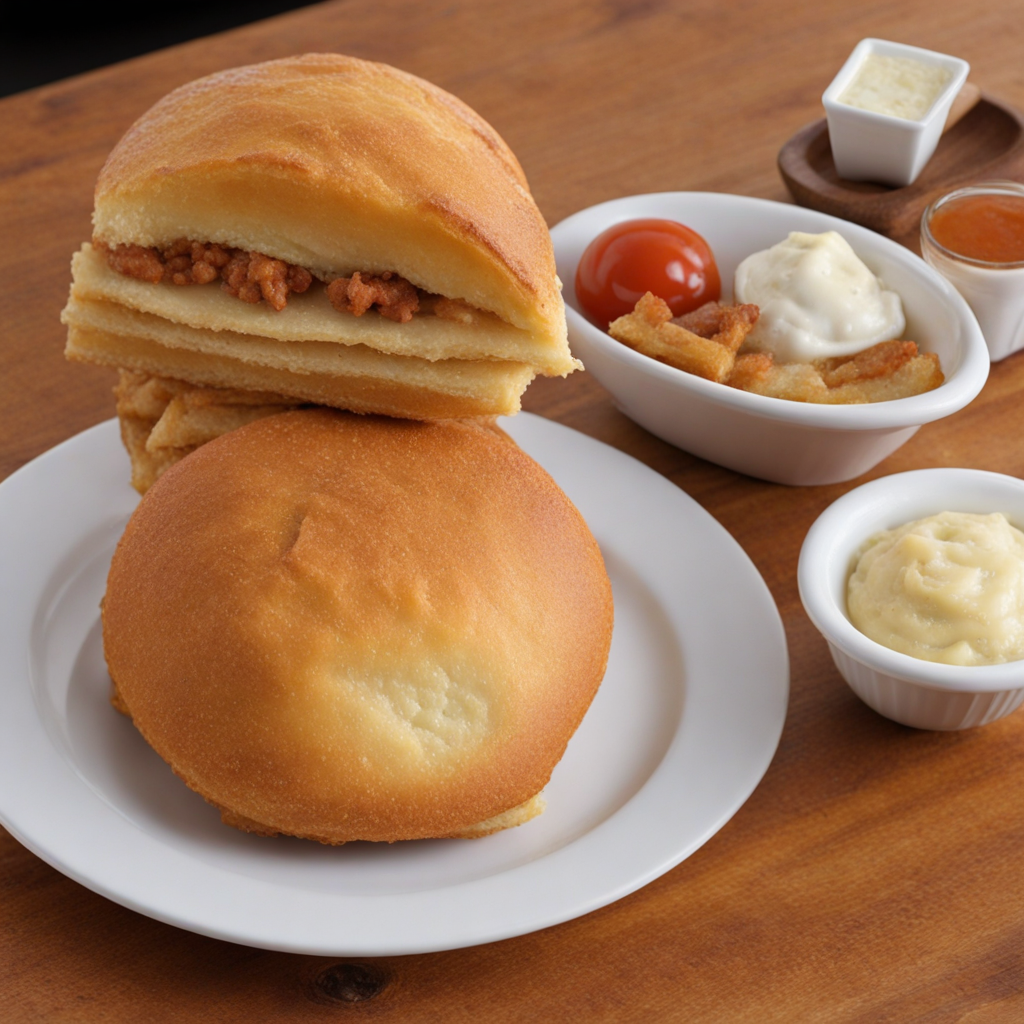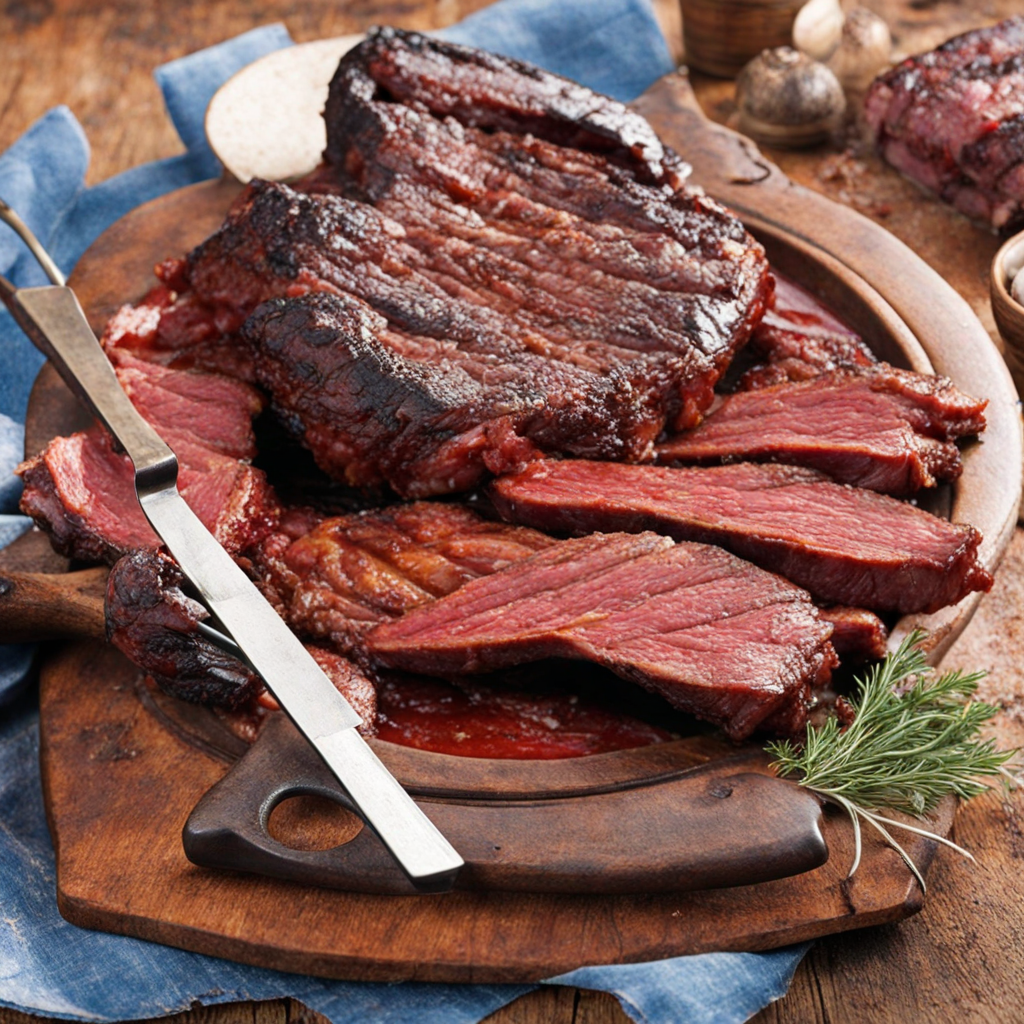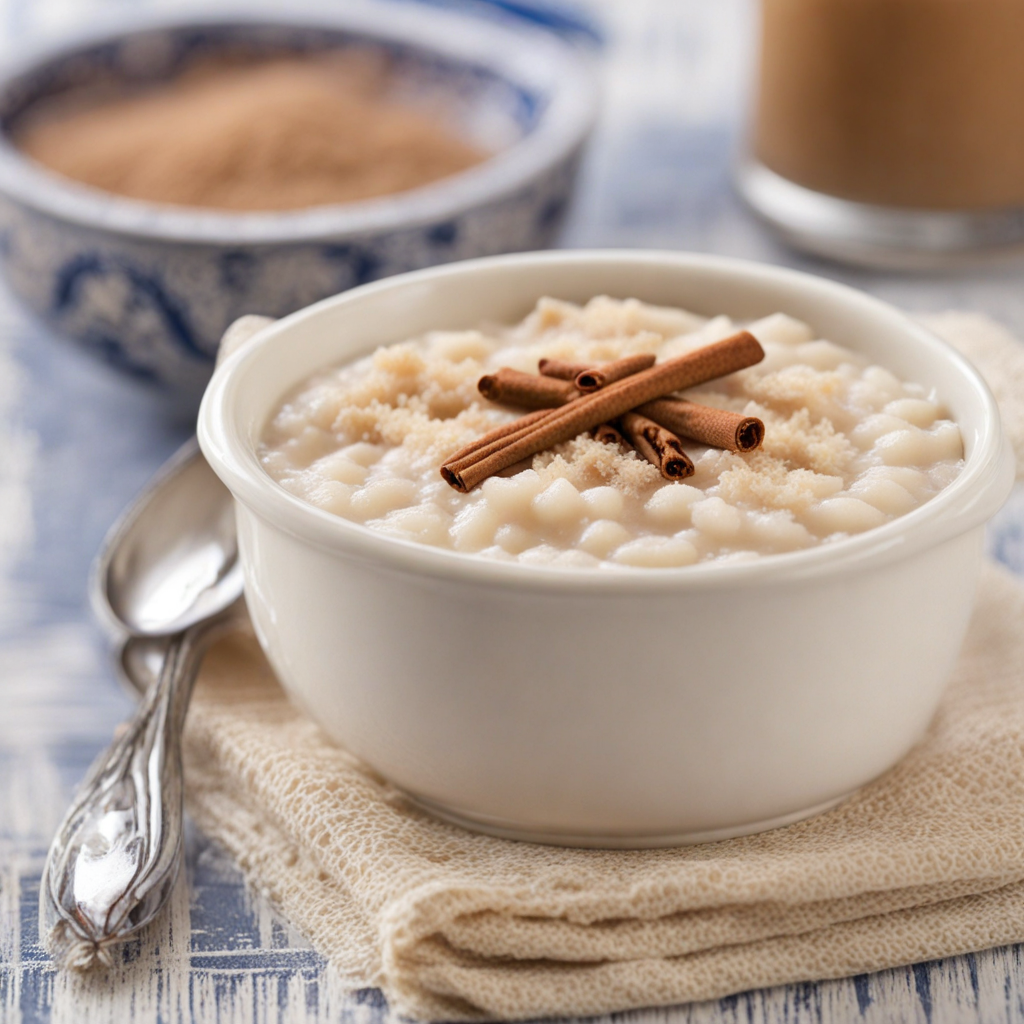Torta Frita
Torta Frita is a delightful Uruguayan fried dough delicacy that offers a unique blend of flavors and textures. The dough is made from simple ingredients, including flour, water, and salt, which are mixed together to create a soft and pliable base. Once the dough is prepared, it is rolled out and cut into round or square shapes before being deep-fried to golden perfection. The result is a crispy exterior that gives way to a tender and slightly chewy interior, making each bite a satisfying experience. Often enjoyed as a snack or dessert, Torta Frita can be served plain or dusted with powdered sugar, enhancing its appeal with a touch of sweetness. In Uruguay, Torta Frita is traditionally paired with mate, a popular herbal tea that adds a refreshing contrast to the rich and indulgent fried dough. Some locals enjoy it with a drizzle of honey or a sprinkle of cinnamon, elevating the flavor profile and adding a hint of warmth. The simplicity of Torta Frita allows it to be versatile; it can be enjoyed on its own or as a complement to other dishes, making it a staple in Uruguayan cuisine, especially during rainy days when people gather to share stories and enjoy comfort food together. Beyond its delicious taste, Torta Frita is a cultural symbol in Uruguay, representing a sense of community and tradition. It is often prepared during gatherings and celebrations, making it a beloved treat among families and friends. The aroma of frying dough wafting through the air evokes nostalgia and warmth, inviting people to share in the experience. As you bite into a Torta Frita, you not only savor its unique flavor but also partake in a cherished aspect of Uruguayan heritage, making it a must-try for anyone looking to explore the rich culinary landscape of this vibrant country.
How It Became This Dish
Torta Frita, a beloved culinary delight from Uruguay, serves as a perfect emblem of the nation’s rich cultural tapestry. This simple yet satisfying fried bread encapsulates the heart of Uruguayan tradition, history, and community. To appreciate the significance of Torta Frita, one must explore its origins, its role in national identity, and how it has evolved over the years. Origins The roots of Torta Frita can be traced back to the indigenous peoples of South America, particularly the Guaraní, who inhabited regions that encompass modern-day Uruguay. They prepared various forms of flatbreads, which were often made using maize and cooked over an open flame. As European colonizers arrived, particularly the Spanish in the 16th century, they introduced new ingredients and cooking techniques that would blend with indigenous practices. The Torta Frita, as we know it today, likely emerged from this fusion of cultures. With the arrival of wheat flour and the introduction of frying techniques, the bread transformed into a versatile snack. It became particularly popular among the gauchos, the legendary cowboys of the Pampas region, who needed quick, filling foods that could sustain them during long days of cattle herding. Torta Frita, made from basic ingredients like flour, water, and salt, was not only easy to prepare but also portable, making it an ideal choice for these nomadic workers. Cultural Significance The cultural significance of Torta Frita in Uruguay cannot be overstated. It is much more than just a food item; it is a symbol of resilience, tradition, and communal gatherings. Traditionally, it is associated with rainy days, a comforting treat that evokes feelings of warmth and nostalgia among those who partake in it. The act of making Torta Frita often gathers families and friends together, fostering a sense of togetherness. In many Uruguayan households, the preparation of Torta Frita has become a cherished ritual. The dough, typically made with flour, water, salt, and sometimes baking powder, is rolled out and cut into rounds or squares before being fried until golden brown. The finished product is often served with a sprinkle of sugar or accompanied by mate, the famous herbal drink that is an integral part of Uruguayan culture. This pairing creates a quintessentially Uruguayan experience, where the simple act of sharing food becomes a celebration of friendship and community. Torta Frita also holds a special place during national holidays and cultural events. It is often served at family gatherings, picnics, and festivals, bringing a sense of joy and nostalgia to celebrations. Its presence is a reminder of the importance of preserving culinary traditions that connect current generations with their ancestors. Evolution Over Time As Uruguay has evolved, so too has Torta Frita. While it has retained its basic ingredients and preparation methods, variations have emerged over time, reflecting changes in culinary practices and tastes. In urban areas, for instance, Torta Frita has undergone a transformation from a rural staple to an urban snack, often found in bakeries and cafes. Street vendors also play a significant role in popularizing Torta Frita, making it accessible to a broader audience. The introduction of new flavors and toppings has also modernized the classic recipe. While traditional Torta Frita is often enjoyed plain or with sugar, contemporary versions may include fillings such as cheese, dulce de leche, or even savory options like chorizo. These adaptations showcase the creativity of Uruguayan cooks and their willingness to experiment while honoring their roots. Torta Frita in Contemporary Uruguay Today, Torta Frita continues to be a staple in Uruguayan cuisine, celebrated for its simplicity and versatility. It is often enjoyed during the winter months as a comforting snack, but its appeal extends throughout the year. The dish has also gained recognition beyond Uruguay’s borders, with many immigrants and expatriates introducing it to new audiences in countries such as the United States, Spain, and Argentina. Thus, Torta Frita serves as a cultural ambassador, bridging gaps between different communities and showcasing the flavors of Uruguay. In recent years, food festivals celebrating traditional Uruguayan cuisine have helped to elevate Torta Frita's profile. Events dedicated to showcasing local gastronomy have seen chefs and home cooks alike share their unique takes on this classic dish. Social media has also played a significant role in the resurgence of interest in traditional foods, with images of Torta Frita flooding platforms like Instagram, enticing a new generation to explore their culinary heritage. The rise of the farm-to-table movement has also impacted the way Torta Frita is prepared and enjoyed. Many chefs now emphasize the use of locally sourced ingredients, such as organic flour and artisanal oils, to create a more authentic and sustainable product. This trend not only enhances the flavor of Torta Frita but also aligns with a growing consciousness about food origins and environmental sustainability. Conclusion Torta Frita is more than just a fried bread; it is a symbol of Uruguay’s cultural identity, a testament to its historical roots, and a cherished part of its culinary landscape. From its humble beginnings among indigenous peoples and gauchos to its contemporary status as a beloved snack enjoyed by all, Torta Frita encapsulates the resilience and warmth of Uruguayan culture. As it continues to evolve and adapt, Torta Frita remains a delicious reminder of the importance of food in bringing people together, preserving traditions, and celebrating a shared heritage. Whether enjoyed on a rainy day or at a festive gathering, Torta Frita will always hold a special place in the hearts and stomachs of Uruguayans, embodying the spirit of a nation that prides itself on its rich culinary traditions.
You may like
Discover local flavors from Uruguay







